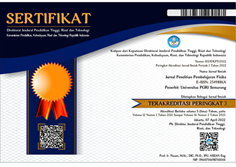Non-Verbal Cues in Interactive Systems: Enhancing Proactivity through Winking and Turning Gestures
DOI:
https://doi.org/10.26877/asset.v7i1.1011Keywords:
behavioral cues, interactive design, human-computer interaction, mechanical turk study, user experience design, roboticsAbstract
This investigation investigates the extent to which proactive behaviours in interactive objects—specifically animated eyes that exhibit behaviours such as blinking and turning—improve user interaction. Through a two-phase process, we investigate the influence of these behaviors on users’ perceptions of proactivity in both physical and virtual environments. In Phase I, we conducted a real-world study using a tangible box with animated eyes to evaluate user responses to expressive behaviours in single- and multi-person interactions. The results indicate that blinking significantly improves perceptions of the box’s intentionality and engagement, thereby fostering a more robust sense of proactivity. Phase II expands this investigation to a virtual environment, where 240 participants on Amazon Mechanical Turk (MTurk) participated, thereby validating the real-world findings. The online study confirms that perceived proactivity is consistently increased across contexts by blinking and turning. These findings indicate that integrating basic, human-like behaviors into interactive systems can enhance user engagement and provide practical advice for the development of sustainable, low-complexity interactive technologies. These discoveries facilitate the future development of resource-efficient and accessible human-computer interaction and robotic systems by simulating intentionality through minimal behavior.
References
[1] Agyemang B, Ren F, Yan J. Proactive Agent Behaviour in Dynamic Distributed Constraint Optimisation Problems. Information 2024, Vol 15, Page 255 2024;15:255. https://doi.org/10.3390/INFO15050255.
[2] Sirithunge C, Jayasekara AGBP, Chandima DP. Proactive Robots With the Perception of Nonverbal Human Behavior: A Review. IEEE Access 2019;7:77308–27. https://doi.org/10.1109/ACCESS.2019.2921986.
[3] Alexander Obaigbena, Oluwaseun Augustine Lottu, Ejike David Ugwuanyi, Boma Sonimitiem Jacks, Enoch Oluwademilade Sodiya, Obinna Donald Daraojimba, et al. AI and human-robot interaction: A review of recent advances and challenges. GSC Advanced Research and Reviews 2024;18:321–30. https://doi.org/10.30574/gscarr.2024.18.2.0070.
[4] Alia PA, Kartika Sari D, Azis N, Gunawan Sudarsono B, Agus Sucipto P. Implementation Artificial Intelligence with Natural Language Processing Method to Improve Performance of Digital Product Sales Service. Advance Sustainable Science Engineering and Technology 2024;6:0240301. https://doi.org/10.26877/asset.v6i3.521.
[5] Dewantara AS, Aryanto J. Implementation Of A Web-Based Chatbot Using Machine Learning For Question And Answer Services In Universities. Advance Sustainable Science, Engineering and Technology 2023;6:0240106. https://doi.org/10.26877/asset.v6i1.17590.
[6] Ghiglino D, Willemse C, Tommaso D De, Bossi F, Wykowska A. At first sight: robots’ subtle eye movement parameters affect human attentional engagement, spontaneous attunement and perceived human-likeness. Paladyn 2020;11:31–9. https://doi.org/10.1515/pjbr-2020-0004.
[7] Hadiyanto MY, Harsono B, Karnadi I. Zonation Method for Efficient Training of Collaborative Multi-Agent Reinforcement Learning in Double Snake Game. Advance Sustainable Science, Engineering and Technology 2023;6:02401011. https://doi.org/10.26877/asset.v6i1.17562.
[8] Buyukgoz S, Grosinger J, Chetouani M, Saffiotti A. Two ways to make your robot proactive: reasoning about human intentions, or reasoning about possible futures 2022. https://doi.org/10.48550/ARXIV.2205.05492.
[9] Kim S, Kang D, Choi J, Kwak SS. Who’s on First: The Impact of the Proactive Interaction on User Acceptance of the Robotized Object. RO-MAN 2022 - 31st IEEE International Conference on Robot and Human Interactive Communication: Social, Asocial, and Antisocial Robots 2022:1377–84. https://doi.org/10.1109/RO-MAN53752.2022.9900757.
[10] Wu J, Du X, Liu Y, Tang W, Xue C. How the Degree of Anthropomorphism of Human-like Robots Affects Users’ Perceptual and Emotional Processing: Evidence from an EEG Study. Sensors 2024;24:4809–4809. https://doi.org/10.3390/S24154809.
[11] Ichino J, Ide M, Yoshiki T, Yokoyama H, Asano H, Miyachi H, et al. How Gaze Visualization Facilitates Initiation of Informal Communication in 3D Virtual Spaces. ACM Transactions on Computer-Human Interaction 2023;31:1–32. https://doi.org/10.1145/3617368.
[12] Anas SAB, Rauterberg M, Hu J. Designing elements for a gaze sensitive object: Meet the coffeepet. HAI 2017 - Proceedings of the 5th International Conference on Human Agent Interaction 2017:223–31. https://doi.org/10.1145/3125739.3125745.
[13] Tuazon BJ, Dizon JRC. Additive Manufacturing Technology in the Furniture Industry: Future Outlook for Developing Countries. Advance Sustainable Science Engineering and Technology 2024;6:02403024. https://doi.org/10.26877/asset.v6i3.908.
[14] Wang X, Li Z, Wang S, Yang Y, Peng Y, Fu C. Enhancing emotional expression in cat-like robots: strategies for utilizing tail movements with human-like gazes. Front Robot AI 2024;11. https://doi.org/10.3389/FROBT.2024.1399012.
[15] John A, Van Opstal J, Bernardino A. A Cable-Driven Robotic Eye for Understanding Eye-Movement Control. 2023 9th International Conference on Automation, Robotics and Applications, ICARA 2023 2023:128–33. https://doi.org/10.1109/ICARA56516.2023.10126021.
[16] Song J, Gao Y, Huang Y, Chen L. Being friendly and competent: Service robots’ proactive behavior facilitates customer value co-creation. Technol Forecast Soc Change 2023;196. https://doi.org/10.1016/J.TECHFORE.2023.122861.
[17] Li D, Liu C, Xie L. How do consumers engage with proactive service robots? The roles of interaction orientation and corporate reputation. International Journal of Contemporary Hospitality Management 2022;34:3962–81. https://doi.org/10.1108/IJCHM-10-2021-1284.
[18] Jinglu L, Sun X. Exploring Proactivity in Human-Vehicle Interaction: Insights for proactive interaction Design. AHFE International 2023;95. https://doi.org/10.54941/AHFE1003804.
[19] Bérubé C, Nißen M, Vinay R, Geiger A, Budig T, Bhandari A, et al. Proactive behavior in voice assistants: A systematic review and conceptual model. Computers in Human Behavior Reports 2024;14:100411–100411. https://doi.org/10.1016/J.CHBR.2024.100411.
[20] Kumar S, Rao G, SubramonianSivarao, Hamid H. Automated traffic light system for road user’s safety in two lane road construction sites. WSEAS Transactions on Circuits and Systems 2010. https://doi.org/10.5555/1852308.1852309.
[21] Automated system and process for providing personal safety (2016) | Bean Charles Alfred | 10 Citations n.d. https://typeset.io/papers/automated-system-and-process-for-providing-personal-safety-3xv90bpayk (accessed August 23, 2024).
[22] Proactive safe driving for an automated vehicle 2019.
[23] Subramaniam S, Esro M. Self-Algorithm Traffic Light Controllers for Heavily Congested Urban Route 2012.
[24] Wang W, Zong F, Yao B. A Proactive Real-Time Control Strategy Based on Data-Driven Transit Demand Prediction. IEEE Transactions on Intelligent Transportation Systems 2021;22:2404–16. https://doi.org/10.1109/TITS.2020.3028415.
[25] Maulana Prawiro W, Rosi Subhiyakto E. User-Centered Design Approaches to Enhance Employee Attendance Applications. Advance Sustainable Science Engineering and Technology 2024;6:02403025. https://doi.org/10.26877/asset.v6i3.798.
[26] Onnasch L, Schweidler P, Schmidt H. The potential of robot eyes as predictive cues in HRI—an eye-tracking study. Front Robot AI 2023;10. https://doi.org/10.3389/FROBT.2023.1178433/PDF.
[27] Durán J, Vidarte F, Vega A, Bustos P, Núñez P. A Novel Human-Awareness Solution for Person-Following Robot’s Behavior Problem Based on Proxemics 2022. https://doi.org/10.3233/AISE220017.











